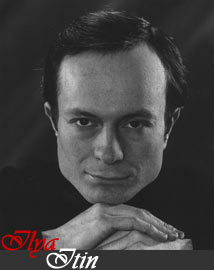Dances with two pianos, somewhat out of step
The Miami International Piano Festival is largely a spring entity with its Broward and Miami Beach events taking place in March and May, respectively. Yet in recent seasons, the festival has also offered other events, as circumstances –and, often, recording sessions with its Video Artists International partners — dictate. Such was the case with the two-piano program presented Friday night at the Broward Center’s Amaturo Theater by Misha Dacic and Ilya Itin.
Titled, “From Classics to Tango,” the program also served as a tribute to Anny Rosendorn, mother of artistic director Giselle Brodsky, and supporter of the festival and many charitable causes.
After two seasons in which it seemed one couldn’t walk into a local concert hall without encountering Prokofiev’s Romeo and Juliet, within the last month we’ve heard copious excerpts from the same composer’s other, more rarely heard ballet, Cinderella: first from Valery Gergiev and the Mariinsky Orchestra and Friday night in Mikhail Pletnev’s transcription for two pianos.
Pletnev’s retooling is clever and effective, even calling on the secundo player to reach under the lid and strike the piano strings for dramatic impact. The playing of Itin and Dacic was technically assured and proficient but distinctly wanting in lyricism and charm. The men are festival regulars but not often heard as a team, and it was hard to avoid the feeling that the two don’t make entirely sympathetic four-hand partners with the Cinderella excerpts suffering from uneven advocacy.
Itin is a skilful and intelligent pianist but he can be a cool technocrat interpretively and such was the case on Friday. Dacic brought more vitality and thrust to the Quarrel and Spring episodes, while Itin, playing primo, seemed to hold the music at a distance. The expressive pages suffered the most with little atmosphere to Winter or tenderness to the waltzes. The final section came off best with imposing glissandos and ample dramatic weight from both men, but this was not a performance to make a case for Pletnev’s arrangement, or the music, for that matter. Also, unusually, for the Miami Piano Festival, the instruments didn’t sound well matched or, in the case of one Steinway, properly tuned.
The announcement that the slated two-piano arrangement of the Adagio from Rachmaninoff’s Symphony No. 3 would not be performed due to time constraints elicited audible chagrin from the audience.
 The concert concluded with a series of tangos by Pablo Ziegler, arguably, the greatest living exponent of Argentina’s nuevo tango movement. Ziegler’s style is clearly in the tradition of Astor Piazzolla, his late colleague and the most famous of 20th-century tango composers. As Dacic’s excellent booklet note points out, the tango originated in the back streets and brothels of Buenos Aires, and there is a mix of sensuality with a dark, slightly sinister quality in the music. Ziegler’s harmonic palette also encompasses surprising classical sophistication as well.
The concert concluded with a series of tangos by Pablo Ziegler, arguably, the greatest living exponent of Argentina’s nuevo tango movement. Ziegler’s style is clearly in the tradition of Astor Piazzolla, his late colleague and the most famous of 20th-century tango composers. As Dacic’s excellent booklet note points out, the tango originated in the back streets and brothels of Buenos Aires, and there is a mix of sensuality with a dark, slightly sinister quality in the music. Ziegler’s harmonic palette also encompasses surprising classical sophistication as well.
The arrangements (four by Dacic for this event and two by Ziegler) were skillfully executed, but these works can get rather clangorous. I’m not sure that two pianos is the best vehicle for such allusive, genre-traversing music, which benefits from the added colors and flexibility of small ensembles, particularly those with violin and bandoneon.
That said, these were lively and involving performances with especially fine, agile playing by Dacic who is clearly attuned to the jazz and populist element of this music. Dacic, taking the primo part, brought out the somber darkness of Bajo Cero and the sinuous, nocturnal languor of Milongueta.
Itin seemed a bit stiff by comparison with playing often too loud and emphatic. The Russian pianist seemed to become more attuned to the music’s style in the latter selections, bringing a florid jazz touch and percussive snap to the Afro-Uruguayan rhythms of La Rayuela.
Posted in Performances
Leave a Comment
Sat Nov 29, 2008
at 3:54 pm
No Comments
